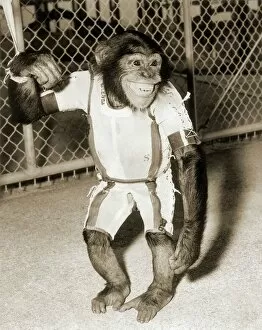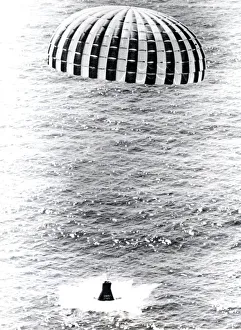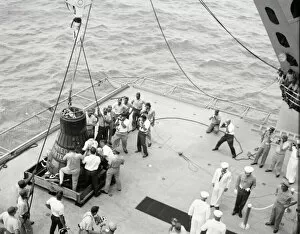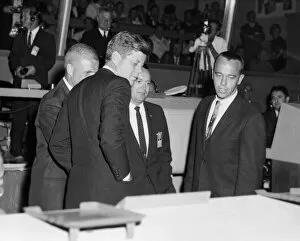Mercury Project Collection
The Mercury Project was a groundbreaking endeavor that pushed the boundaries of space exploration
All Professionally Made to Order for Quick Shipping
The Mercury Project was a groundbreaking endeavor that pushed the boundaries of space exploration. In 1961, NASA achieved a major milestone by sending the first chimpanzee into space aboard the Little Joe 5B High-Q-Abort Test. This marked an important step towards human spaceflight and paved the way for future missions. The dedication and ingenuity of the Mercury Astronauts were recognized when they received the prestigious Collier Trophy at the White House in Washington, USA, in 1963. Their bravery and commitment to pushing scientific boundaries made them true heroes. One iconic image from this project captured Alan Shepard being hoisted from his Mercury capsule after a successful mission in 1961. This moment symbolized triumph over adversity and showcased NASA's ability to overcome challenges. Despite setbacks like the explosion of MA-1 capsule during assembly in 1960, NASA persevered with their ambitious goals. They reassembled it and continued their pursuit of exploring outer space. Another memorable event was Gordon Cooper's recovery after his Faith 7 mission in 1963. The sight of him on deck, surrounded by ocean waves, demonstrated both his personal achievement and America's progress in conquering new frontiers. However, not all attempts were successful; there was a failed attempt to recover Liberty Bell 7 from the Atlantic Ocean in 1961. These setbacks served as reminders of how demanding and unpredictable space exploration can be. In another remarkable moment captured by NASA photographers, Navy frogmen swam towards spacecraft floating on Pacific Ocean waters for retrieval purposes. This image highlighted not only teamwork but also emphasized safety measures taken during these missions. President Kennedy himself visited Cape Canaveral's Mercury Control Center in Florida during one occasion to witness firsthand the incredible work being done there. His visit further underscored national support for this pioneering project. Lastly, various tests were conducted throughout this project - including flotation tests on models of Mercury capsules - which helped refine designs and ensure the safety of future astronauts.











